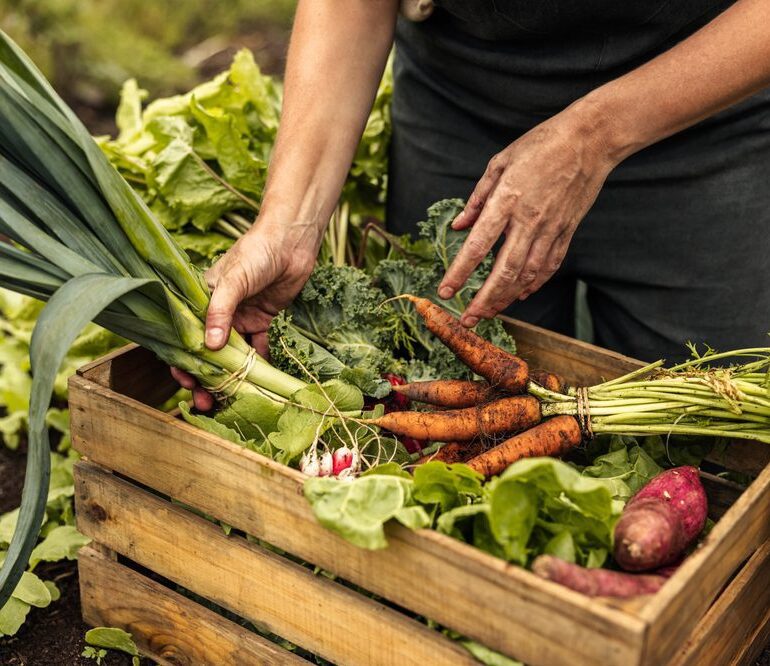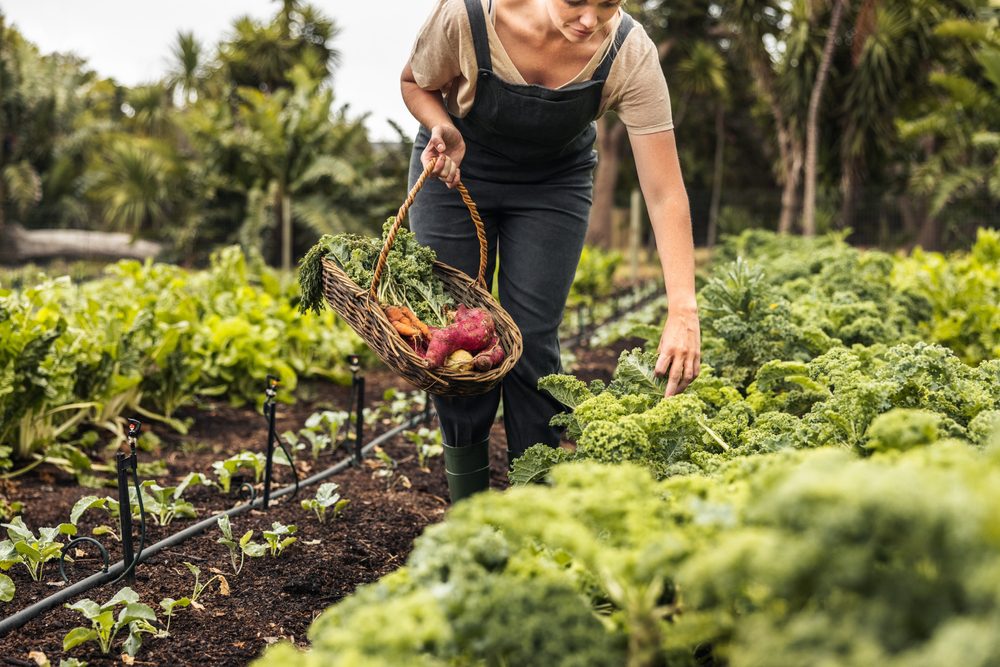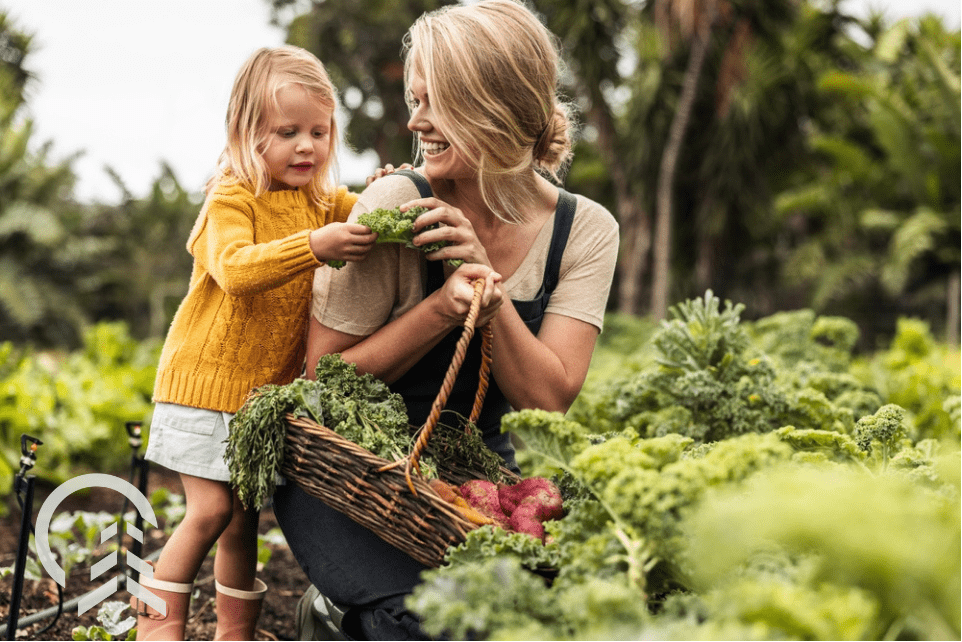Fall may sound like a long way off, but it takes planning to get a fall garden off the ground. Many fall vegetables are planted in mid- to late summer to give them the head start they need. Knowing where you’ll put them, what you want to plant, and when to put them in the ground is important for making your fall garden successful.
In this article, we’ll go over 18 fall favorites to consider for your fall garden this year, to be planted as your summer plants are naturally winding down production. As always, having a partner to ask your gardening questions is important. The professionals at Platt Hill Nursery are here to help, so stop by any time.
18 Fall Vegetables to Plant in Your Garden
1. Pumpkins
Fall is a time for pumpkins. These vegetables have a long growing season, so plants are started in the spring. The bigger the pumpkin, the more time (and space!) it needs to grow. Plan ahead.
2. Carrots
Carrots don’t survive well in extreme hot weather, so these are the perfect vegetables to plant when the weather is finally starting to cool. Plant carrots about 10 to 12 weeks before the frost date, which happens in mid-October.
3. Beets
Beets can benefit from some shade when they’re first planted in late summer, because cooler soil temperatures help make sweeter beets. These vegetables can be left in the ground until the first frost.
4. Brussels Sprouts
Brussels sprouts may be some of the last plants left standing in your fall garden. They can be sown directly into the garden in mid to late summer, and continue to produce from the top – so harvest from the bottom.
5. Winter Squash
Winter squash are similar to pumpkins because they need a long growing season and a lot of space. You can grow them on trellises to keep them contained. Start them indoors and plant them in your garden after danger of frost has passed, usually around May 15th in our area.
6. Broccoli
Direct sow broccoli seeds in mid-summer, or plant seedlings in late summer. They’ll continue growing until the first hard frost, at which time they should be harvested.
7. Potatoes
Potatoes grow well in cool weather, so you can plant around Good Friday for your fall harvest.
8. Spinach
Nothing dresses up your salads like home-grown spinach. Spinach grows quickly, so plant it about six weeks before the first fall frost.
9. Parsnips
These root vegetables have a long growing season, and can tolerate some freezing weather. In fact, freezing weather makes parsnips taste sweeter. You can direct sow parsnips in the ground around the last frost date in spring for a fall harvest.

10. Radishes
Radishes can be planted in August for a fall crop. They’re relatively easy to grow and take up little space, so you can plant these vegetables in the perimeter of your garden. When they’re ready to harvest, you’ve got a colorful food to include in your salads.
11. Arugula
Arugula dresses up those salads, so if you enjoy eating your greens, arugula is a must. Plant arugula in late summer for a fall harvest.
12. Cauliflower
Cauliflower is a cool-weather crop that may need to be shaded if set out too early. Put cauliflower starter plants in the ground about 8 weeks before the first frost date.
13. Bush Beans
Bush beans are fast growers that produce a lot of beans. Plant them starting in early August, growing two rows at a time and waiting a week or two between rows. This allows your garden to continue producing beans into the fall and until the weather gets cold.
14. Turnips
Plant turnips in late summer. If you enjoy many turnips in the fall, consider planting them on a staggered schedule to produce a continuous supply.
15. Garlic
Garlic is a plant that can go in the ground just a month before the first frost date of fall. Leave garlic in the ground until spring harvest.
16. Scallions
Plant scallions in late August at staggered schedules to produce throughout the fall. The afternoon sun is good for scallions, which need cool soil to produce.
17. Kale
This nutritious green vegetable is tolerant of frost and thus a popular fall vegetable. Kale comes in many different varieties, so you can choose the option that most appeals to you in color or taste. This distinctive-looking vegetable makes an excellent addition to salads.
18. Green Onions
This fast-growing onion plant is harvested when the green parts are still tender, before bulbs can form. You can grow these plants in your garden any time during the growing season, including in fall.
Quick Tips for Starting Your Fall Vegetable Garden
Fall vegetable gardening can be rewarding! Some tips:
- Clean out the beds before planting. Get rid of roots and debris from your spring garden.
- Know which parts of your garden get afternoon shade. Some cool-weather plants need this to survive.
- Consider using extra seeds leftover from your spring planting, if you have any. They should still be good in fall.

Popular Herbs Compatible with Vegetable Plants
Want to grow vegetables and herbs together? There are many herbs that are compatible with vegetable plants. Consider growing oregano, parsley, cilantro, or thyme with your fall vegetable garden. Mint is best grown in containers, while the others can be grown in the perimeter and small spaces of your vegetable garden.
Have Questions? The Professionals At Platt Hill Nursery Have Answers
Growing your own food in Chicago is fun! Ask the professionals at Platt Hill Nursery for help, or check out our vegetable growing guide. We sell perennials as well! If your spring garden is still thriving in late summer and you’re unwilling to pull healthy plants for fall gardening, consider growing fall container plants.


